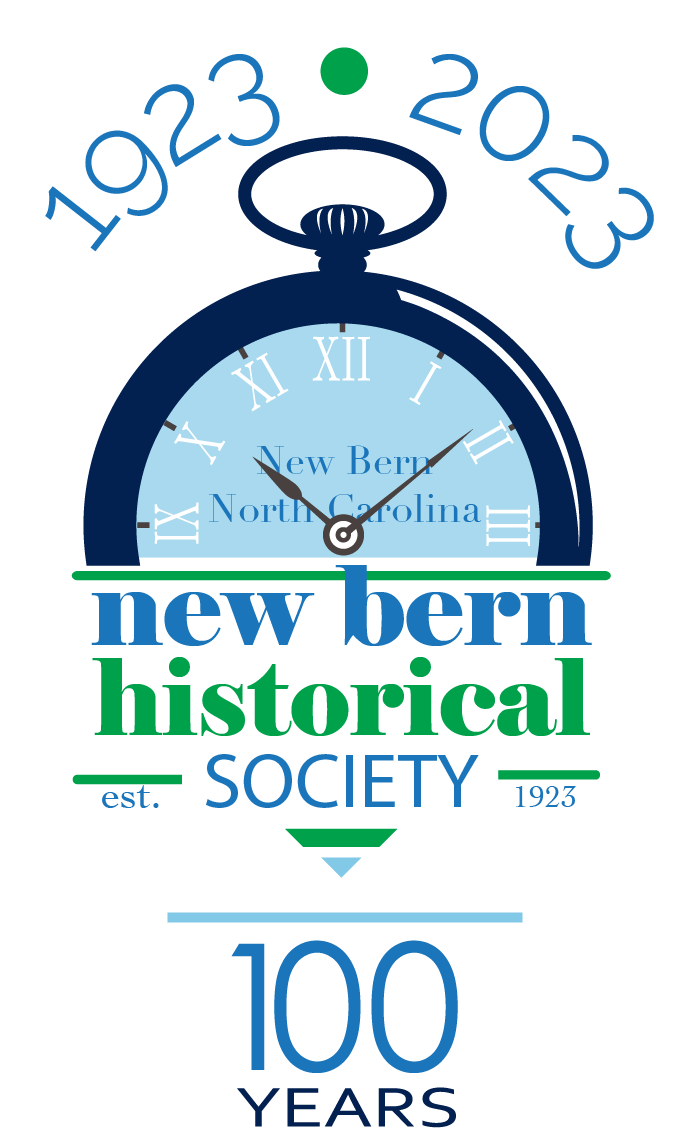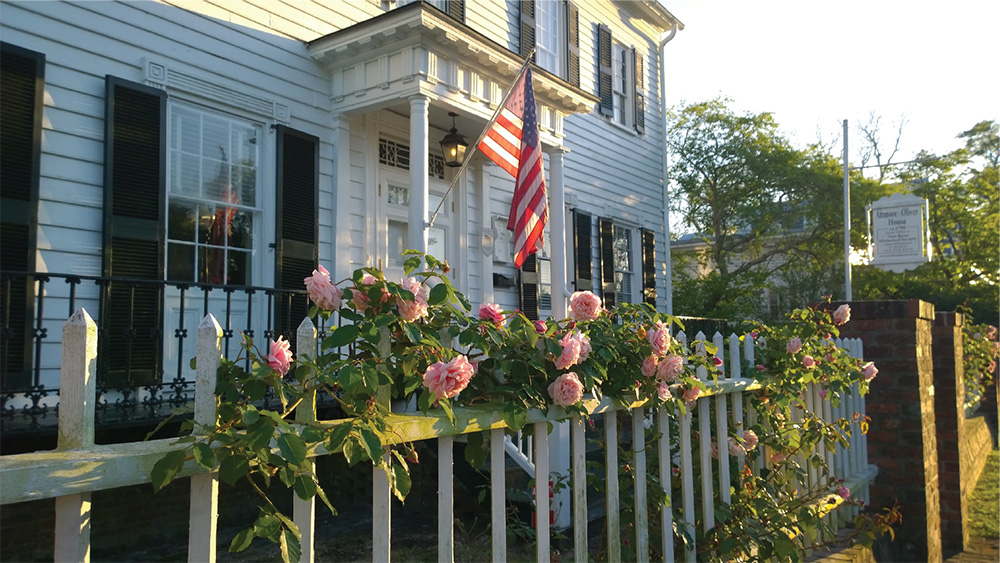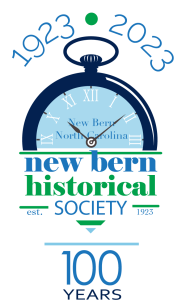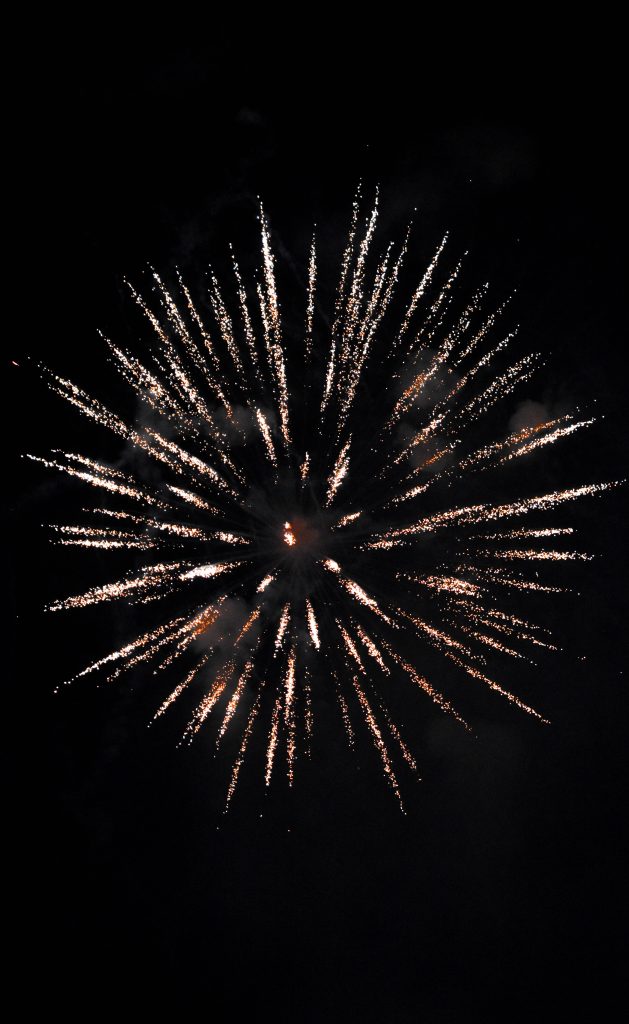
A Blast from the Past
by Claudia Houston, Historian, New Bern Historical Society
On December 27, 1909, the New Bern Daily Journal reported that the day after Christmas, New Bern was treated to a display of Chinese fireworks "that was the grandest display of any kind of fireworks ever seen in this city. Hundreds of people were out to witness this remarkable display, and everyone who witnessed it was astounded. Fully 500,000 crackers were fired...." Who provided this rare and exciting amusement? Not the city, nor some fraternal organization, but rather, an obscure merchant named Hop Wah. This discovery made us wonder, who in fact was Hop Wah?
Ironically, at about the same time that we discovered this article in the paper, we found another reference to Hop Wah. While discussing New Bern's historical photographers, Historical Society Curator Jim Hodges and I happened upon a photo of the Winstead Photographic studio at the corner of Middle and Pollock Streets where the Elks' building now stands. We found this photo in A New Bern Album, by John Green III, among pictures of a circa-1900 parade that passed by Mr. Winstead's studio. According to Green, it showed, "The establishment of Mr. Hop Wah, New Bern's own Chinese laundryman (small frame building to left of the photo gallery)." If you look at the photograph below, you will see the blue arrow pointing to the sign on the building that said "Hop Wah's Laundry" (A New Bern Album, pg. 117-118).
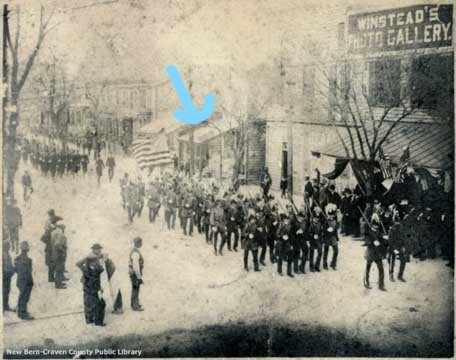
Up to this point we were not aware that there were any Chinese immigrants in New Bern. After learning about Hop Wah we wondered whether there were other Chinese businesses and families here during this period. We discovered that in June 1887, the Hotel Albert obtained the services of two experienced Chinese laundrymen, Thomas and Sam Kee. They had left China thirteen years prior and worked on Park Avenue in New York before coming to New Bern. They were not employed by the Hotel except for being situated in the building. The Kee's seemed to have had a successful business there for some time, but in August 1899, due to an increase in taxes for laundries, Sam Kee decided to consolidate his business with one Hop Wah who now had a laundry on Middle Street.
In a newspaper article in 1901, Hop Wah announced to a reporter that he continued his business at the old stand on Pollock Street (the store in the photo) but it appeared that a new Chinese businessman had come to town and proposed opening a new shop on Middle Street. To make matters more confusing, this new merchant was also using the same name - Hop Wah! Understandably outraged, the original Hop Wah declared that he hoped his loyal friends and customers would not be deceived by this interloper.
Hop Wah appeared to be a popular merchant in the city, but unfortunately, his business suffered from incidents of theft and of fire. In August 1906, his building was burned and most of it destroyed. Although during this period there was substantial anti-Chinese sentiment across the United States, we were not able to determine whether these were coincidental incidents or acts of anti-Chinese vandalism.
Hop Wah moved to a new location on Middle Street, but on Dec 23, 1908, a fire destroyed the two-story building next to his establishment and Hop Wah's laundry was gutted with a loss of several hundred dollars. Undaunted, in 1910, Hop Wah bought out another Chinese laundryman, Charlie Ming, at 128 Middle Street and continued in business.
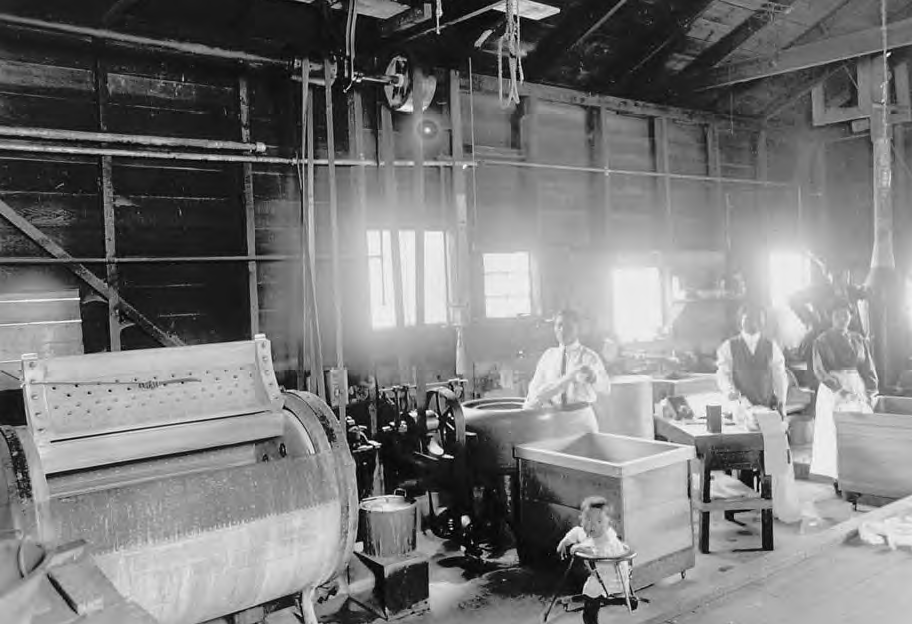
In December of 1910 Hop Wah announced that he had purchased another $100 worth of fireworks and that he would once again entertain the population of New Bern on the day after Christmas. The people of New Bern were delighted at the prospect!
For more information about the history of Chinese Immigration, see https://history.state.gov/milestones/1866-1898/chinese-immigration
